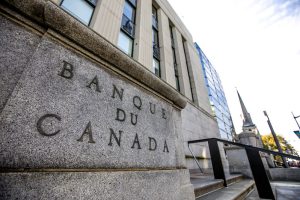Inflation is, sadly, a part of everyday life. As time goes by, prices go up and down – and for a variety of reasons! In Canada, the inflation rate is measured somewhat similarly to other Western territories, such as the US and the UK. However, Canada naturally has its own private economy and forecasts, which is why it’s important for citizens and business owners to keep a close eye on movements in national and local finances.
As someone who travels to and from Canada a lot, the economy there genuinely fascinates me. No, really! I’ve been doing some digging on various Western economies lately (and how they react to inflation), and this time around, I’ve got some facts to share about how Canada measures and adjusts its economy around inflation.
So, whether you’re a citizen or are simply interested in learning more about international finances, here are some facts about inflation in Canada that might just fascinate you.
1. Canada observes an inflation triangle.
Canada, like other Western countries, views inflation as the steady increase of products and services over time. In fact, much of its system for measuring inflation boils down to three key types, in what’s called the inflation triangle – a model named by Robert J. Gordon.
These inflation types help Canadian economists and government officials work out what’s likely to increase the cost of living over time.
2. Cost-push inflation is about material costs increasing.
Sometimes, inflation can increase in Canada because of the cost of raw materials and supplies getting more expensive. That means inflation can rise even if demand stays steady or even decreases!
A good example of inflation rising because of cost-push scenarios is gas and fuel. Some economists believe that, as a result of Russia invading Ukraine, the cost of sourcing fuel and gas has increased because the supply chain has altered. Gas providers have needed to spend more to find resources elsewhere, and potentially pay more to re-route it.
3. Built-in inflation describes wages increasing alongside.
Meanwhile, Canadians sometimes expect built-in inflation – which is where prices continue to rise by default, and as such, citizens expect their wages to rise permanently to meet this new demand.
Ultimately, this cycle can lead to a never-ending inflation spike – meaning consumers are always left needing more money to be able to afford the cost of living!

4. Demand-pull inflation rises with demand.
The last of the three inflation principles applied in Canada is demand-pull. This type of inflation refers to circumstances where consumer demand is increasing beyond expectations, and an economy’s supply simply isn’t meeting that need.
A good example of this is the COVID-19 pandemic. Many of us remember a time when there was very little toilet roll available! The lack of supply and increasing demand meant that toilet roll providers and supermarkets increased their prices to keep up, and inflation therefore increased.
5. Canada uses an inflation measurement system that’s similar to the US and UK.
Interestingly, the way Canada measures its inflation sits somewhere in the middle between Britain and America. That is, in the sense that it uses a CPI, or consumer price index, much like the US – but in that it also uses a small “basket” system, much like the UK.
Canadian economists use this idea of a basket in which they place around 700 different services, products, and goods that everyday citizens are likely to demand and use. In the UK, that figure is around the same. In the US, this extends into the tens of thousands!
6. This basket helps Canadian authorities decide the current level of inflation at any time.
Let’s use a quick example of a Canadian inflation basket to show you what I mean. Let’s take one basket, from 2023, which measures at an average cost of $300.
If, in 2024, that basket now costs $309, there’s been an increase of 3%, and that’s therefore also the official rate of inflation.
This rate tells us, effectively, how much everyday products (and indeed the cost of living) is increasing by from year to year. That said, Canadian authorities also measure inflation on a shorter scale to help build more concise and better-informed forecasts.
7. Canada follows a rule of 2% inflation as a balanced rate.
Again, there are further similarities between the US and the UK here! Canada’s economy, which is supported by the Bank of Canada, aims to keep inflation at around 2%. That’s also the target rate in the UK and in the States. Seems to be a stable rate that most people agree upon!
Like in the UK, the BoC takes immediate action if the interest rate goes above or below this balance line. If inflation in Canada goes above 2%, for example, the BoC usually recommends increasing interest rates. That usually helps to curb people’s ability to borrow and spend. Ideally, it helps supply meet demand.
When inflation dips below 2% in Canada, meanwhile, the BoC naturally does the opposite. The economy needs to grow, so the Bank boosts interest to encourage spending and investment.
8. Canada’s inflation rate has held steady for some time.
Given that things change dramatically in short spaces of time, what I’m about to tell you could well alter in the near future after publication—but since late 2023, Canada’s economy and inflation rate seem to have stabilized somewhat.
That is, it’s holding somewhere between 2% and 3%. That’s fairly close to the healthy benchmark the BoC set for the economy. However, Canada’s inflation rates haven’t always been this stable.
9. In 2022, Canada saw a huge CPI spike.
2022 was a big year for inflation rising not only in Canada, but in the US and the UK, too. Toward the start and middle of the year, inflation in Canada spiked at a dramatic 8%! Much of that was food and fuel, too – as this peaked at above 5% taking those commodities out of the equation.
Thankfully, inflation started to tumble fairly quickly heading into 2023. It peaked a little more to around 4% before the year ended, but it’s dwindled since.

10. Canada’s seen some extremely low inflation rates.
The spike in inflation in 2022 was a big shock to the system for the Canadian economy. It’s not only because 8% was a higher rate than many had expected over several years, but it’s also because Canada’s inflation had sunk below 1% as recently as 2020, perhaps thanks to the COVID-19 pandemic.
That means, in the space of two years, Canada effectively saw an inflation spike of between 7% and 8%. That meant a huge change in expenses for everyday families and those paying off debt! Inflation affects everyone.
11. Canada took drastic action to drive its inflation down.
With such a dramatic inflation spike, it stands to reason that the BoC chose to take aggressive action to curb rising prices. Between 2022 and 2023, a bold decision to boost interest rates from 0.25% to 5% helped to bring inflation down.
Following these drastic measures, Canadian decision-makers are now confident the inflation rate will continue to plateau. Again, things are likely to change after this article is published, so keep your fingers crossed!
12. Most people in Canada are reportedly worried about inflation.
Statistics from national surveys show that while most people are worried about inflation rates in Canada, it’s not the vast majority of people affected. It’s reported that around 54% of people, for example, are worried about inflation, whereas around 88% of households are likely to feel the pinch when it comes to ever-increasing costs of gas and fuel.
It’s thought that around 53% – a similar number to those showing concern about inflation – are reportedly struggling with the cost of living crisis. Worrying numbers indeed.

13. Canada builds its CPIs on a few different surveys and resources.
The Canadian CPI, which helps to determine the exact level of inflation at which costs are increasing for citizens and businesses, is determined by various goods and services in its basket model.
For example, food, drink, transport, and shelter are all included in the CPI basket. These are all areas where Canadians spend considerable money on a regular basis.
Canada uses sources such as its Survey of Household Spending to ascertain the average amount people spend on certain items and cost-of-living categories. This also helps government economists work out where most household budgets are going. For example, most might go on housing.
14. CPI weighting varies from area to area.
Here’s where things can get a little bit more complex for Canadians keeping an eye on the CPI. Officially, the BoC weights basket elements on a case-by-case basis, or at least based on relative importance between different provinces across the nation.
That means the elements that go toward basket calculations for CPI in, say, British Columbia, could be different from those calculated in Nova Scotia.
15. Some of the most expensive consumer goods in Canada are bought directly from stores.
Specifically, recent CPI data shows that food bought from supermarkets and stores is more expensive, or higher in CPI, than meat, eggs, and bakery in general.
Fruit and vegetables in Canada, on the other hand, have relatively low CPIs compared to meat and general groceries – all the more reason to invest in healthier choices, then±
15. The vast majority of people keep a close eye on interest rates.
Although the statistics I quoted earlier appear to suggest that many Canadians aren’t too worried about inflation, the vast majority of people genuinely care about the interest rates they’re paying.
A further survey, for example, suggests that around 71% of people in Canada check Bank of Canada interest rates closely—5%, meanwhile, don’t ever check at all. That at least shows that most people across the nation are trying to keep abreast of the latest economic movements.
16. The CPI in Canada has steadily increased since at least 2000.
Much like in the US, Canada’s CPI has continued to creep forward over the past few decades. During my research, I found that the rate of CPI in 2000 was as low as 95.4 – and by 2022, this was 151.2.
That’s perhaps not as dramatic an increase as some territories have seen, however, it’s still clear that Canadian people have had to make significant adjustments to their lifestyles and careers to keep up with prices rising.
The leap between 2021 and 2022 was particularly high – by almost an entire ten points! That’s the biggest leap in CPI recorded between 2000 and 2022, with the CPI generally increasing by two or three points annually.
17. The Bank of Canada prefers low and stable inflation.
Economists generally agree that too high and too low inflation can be detrimental. Therefore, it’s important for those involved in setting and measuring prices to keep inflation at an agreed balance (such as the rate of 2% as the UK, US, and Canada appear to agree on).
However, the Bank of Canada reportedly prefers to aim low and stay predictable, so that households and businesses can plan ahead for potential economic changes easier (such as sudden spikes in inflation).

18. High inflation isn’t great for many people in Canada over a certain age.
Another reason why the BoC is keen to keep inflation low is because a high rate of inflation can harm the financial health of pensioners who don’t have enough income to cope with rising product prices.
People on welfare who might have a relatively low household wage are also likely to feel high inflation the most in Canada. Therefore, the BoC’s sometimes drastic attempts to get inflation down are for the greater good for millions of people who are likely to struggle the most.
19. Canada is nowhere in the list of countries with the highest inflation.
For all Canada witnessed a large inflation spike in the past few years, even at its height, the rate wasn’t enough to challenge some of the jaw-dropping rates facing several countries in Africa and South America.
In Zimbabwe, for example, citizens faced an astonishing inflation rate of more than 667% in 2023! This is projected to decrease, but it’s far and above the largest inflation rate per nation right now. Venezuela, Sudan and Argentina also have high inflation rates at the time of writing, with the latter’s being projected to increase.
Therefore, in many ways – Canadians have things pretty good, at least comparatively.
20. It’s thought COVID-19 and the invasion of Ukraine exacerbated the Canadian inflation spike.
As mentioned, big socioeconomic movements of the past few years are largely to blame for inflation spikes in Western territories.
In Canada in particular, some economists attribute the spike of 8% to labour decreasing at the height of the pandemic, alongside supply chain disruption which led to fuel costs increasing at an alarming rate.
Beyond this, again, Russia’s invasion of Ukraine, which led to sanctions being placed on the former, led to big changes in supply chains and exports. That means Western territories behind such sanctions have needed to weather an economic storm in recent times. However, Canada appears to be approaching something of a plateau!

FAQs About Inflation in Canada
What is the current inflation rate in Canada?
The rate of inflation in Canada is always subject to change, and that means this guide – published at a specific point in time – is likely to be out of date if I give you a specific rate! Therefore, I suggest you take a look at YCharts’ handy, rolling guide to Canadian inflation, which updates with real-time figures to keep track of.
Is it cheaper to live in Canada or the UK?
Taking into account inflation and cost of living increases, it’s estimated to be more expensive to live in the UK than it is in Canada right now. That, however, can differ from area to area, and things – as mentioned above – are always likely to change. Right now, for example, the UK’s inflation rate is lower than Canada’s, but that doesn’t mean it’s cheaper to live there!
Where are the cheapest places to live in Canada?
Regardless of inflation, some of the cheapest areas to live in Canada include towns based in New Brunswick, Prince Edward Island, and Quebec. It pays to look at more than just average house and living costs per province, however – as there might be some bargains out there!
Do you know any fun facts about inflation? Share them in the comments below!











